Motovun: Medieval Mystery and Magic
In the center of Istria lies Motovun, an acropolis known for its melange of mysticism, mystery and magic. Months later, it holds me in a magnetic grasp.
The hot wind of August blows dry in Istria, flinging dust devils to interrupt the sun. Motovun shimmers and undulates in the distance. It’s a medieval mirage, atop the hill the Venetians could only take by force instead of politics in the 13th century.
Natalia has brought me here on a whirlwind of her own. As we careen through the countryside in her powerful black Mercedes, the Croatian consonants scatter over me, tempered with the lilt of Italy and Anastasia rides shotgun, translating her mother. They’re proud that Venice had to work so hard to capture Motovun, one thousand and fifty two steps up a staircase to the sky.

Where other mortals set forth to begin the climb on foot, Natalia is waved on through. Our engine purrs as we pass, and I sink in my seat as we ascend, simultaneously guilty and grateful.
It pays to know someone, as I’ve already learned this day. We’ve come from a visit with the finest winemaker in Istria. His malvasia still lingers on my taste buds in notes of acacia and pear.
Mystical Connections in Motovun
Now we’ve arrived in mystical Motovun, the walled city in the clouds where ley lines intersect in a so-called dragon’s furrow of positive energy. Mysterious Motovun, where giants whose bones have recently been uncovered once walked among men.
Mesmerizing Motovun, where we want to trade the taste of malvasia for the loamy white truffles of Istria, which are hunted with dogs and dug from the forest aside the River Mirna below, to be mixed with honey and cheese.
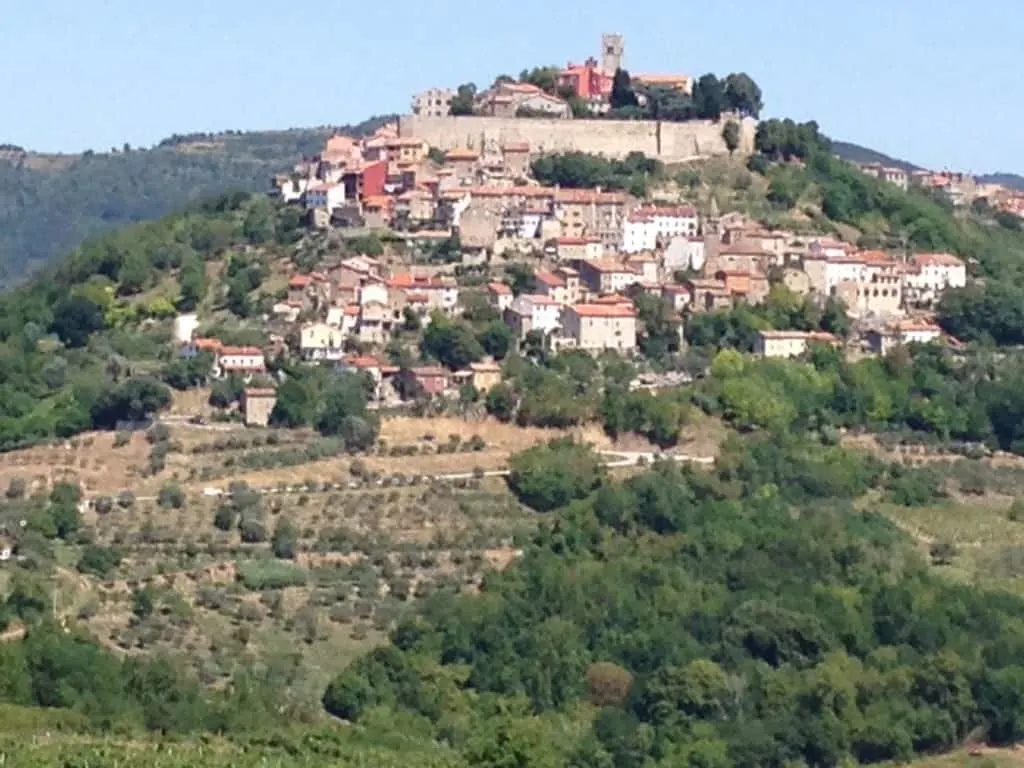
“If you want to find the secrets of the universe, think in terms of energy, frequency and vibration.” – Nikola Tesla
“Can you feel anything?” asks Anastasia, looking around nervously, as if we’re embarrassing her. Arms outstretched, her mother and I are espaliered against the cool stucco exterior of the Church of St. Stephen’s. We each have one ear to the wall, listening spread-eagled for what we’re not sure, but something.
New Age thinking holds Motovun is a significant crossroads of ley lines called a “dragon’s furrow,” St. Stephen’s is built upon it.
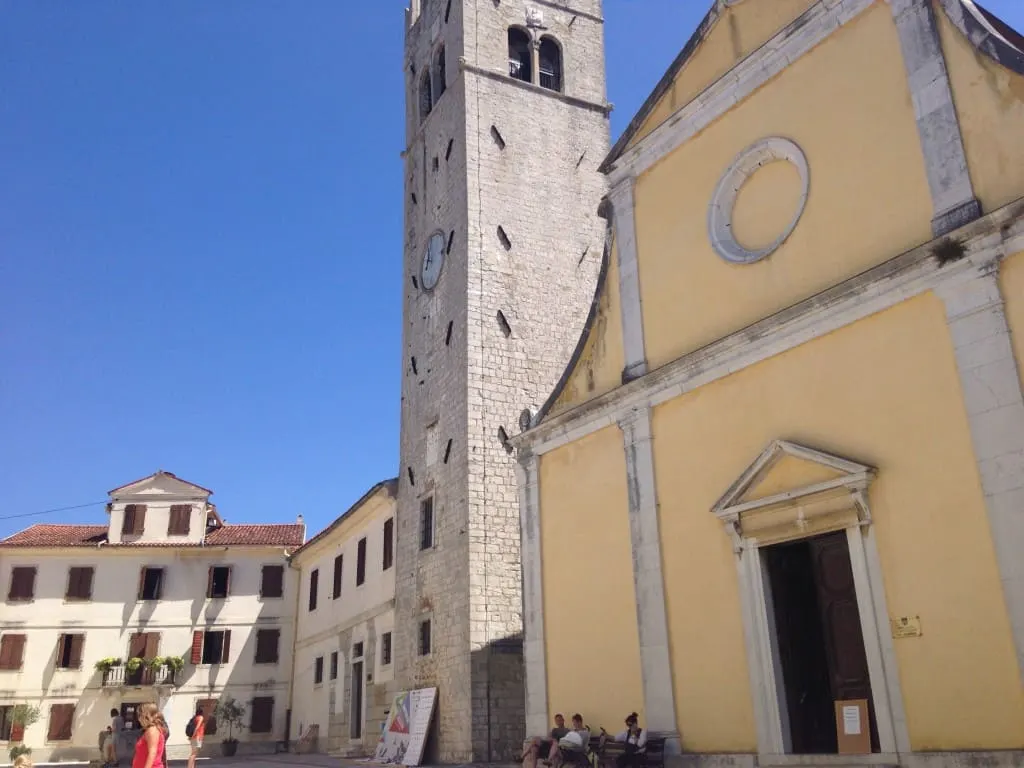
Ley lines, called dragon lines, fairy lines and dream lines across cultures worldwide from Celtic to aboriginal, are thought to be energetic meridians between holy places. Ley line theorists claim the ancients built their monuments along these conduits, with spiritual vortexes or psychic portals corresponding at their intersections. These intersections positively affect humans in their state of wellness and creative practices.
I’d been introduced to the concept when we lived on Kaua’i, an island similarly rich in spirituality. Now I am on the opposite side of the globe and flabbergasted that the subject of ley lines pops up again in a conversation I only partially understand.
Is this a sign? Of what, then?
Motovun Was Part of the Venetian Empire
St. Stephen’s dates from the late Renaissance, but the water cisterns in front of it in the city’s main square are a couple hundred years older. We’ve arrived via a Fibonacci-like spiral from the base of the hill to the city’s main gate, where the Venetian lion’s book is closed, signifying the city was conquered by force.
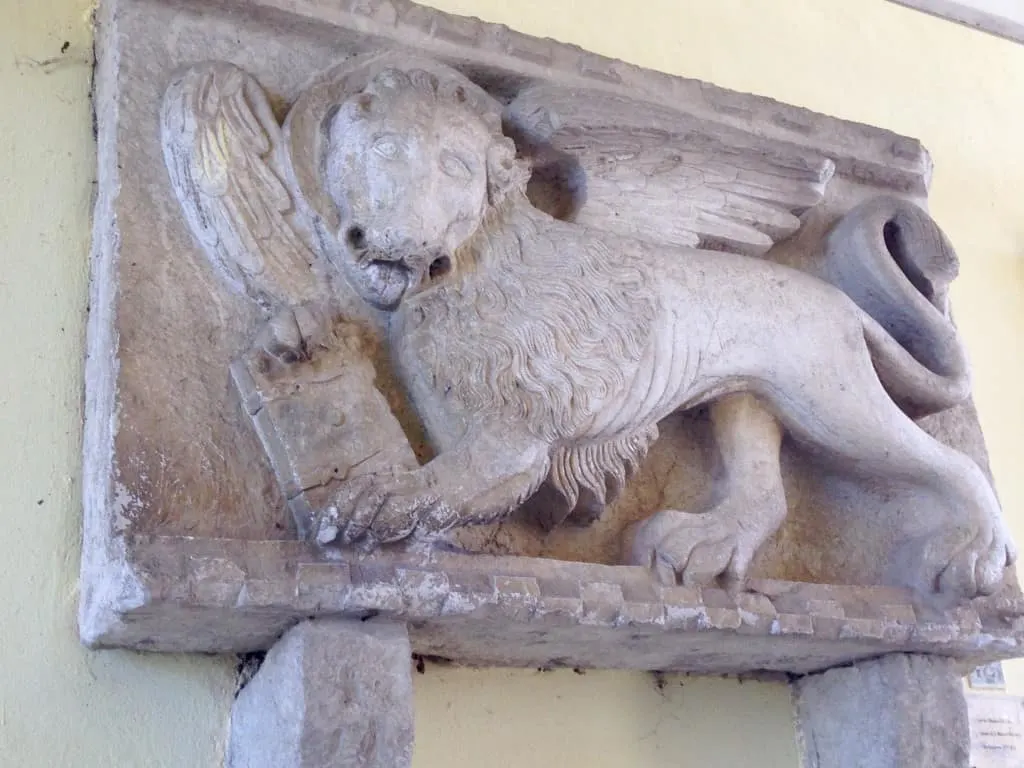
The church is said to be designed from 16th century sketches attributed to Palladio, whose name was given to him by his employer, the Humanist poet and scholar, Gian Giorgio Trissino. Trissino wanted his young protege to appreciate art, science and classical literature; “Palladio” means “wise one.”
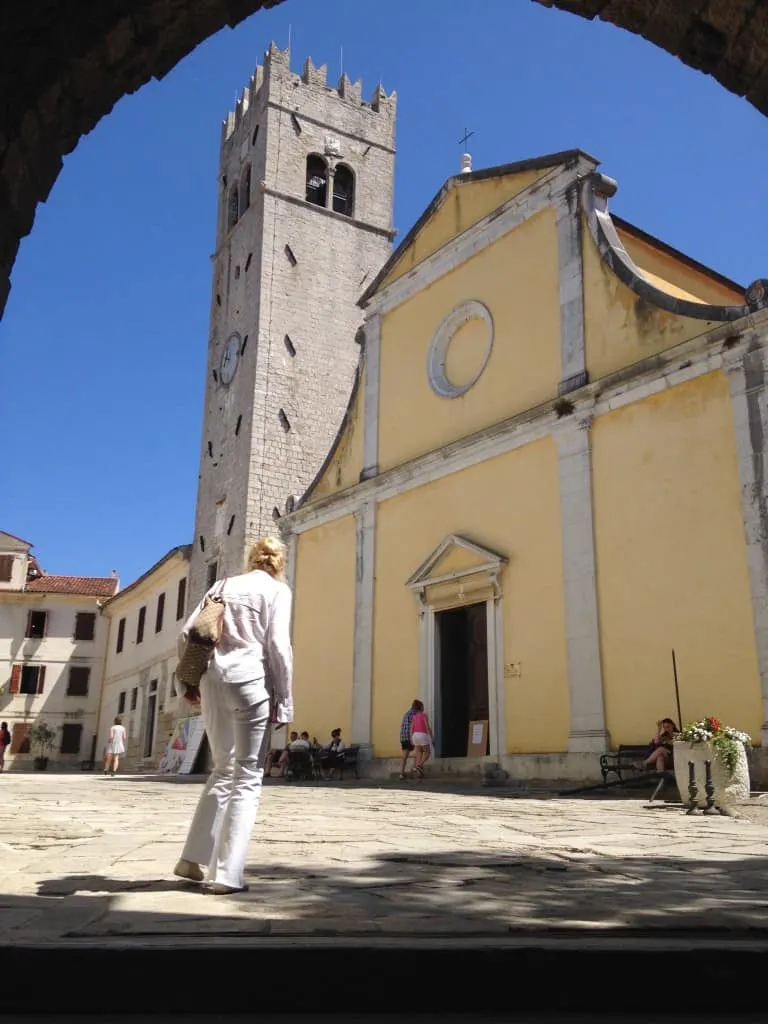
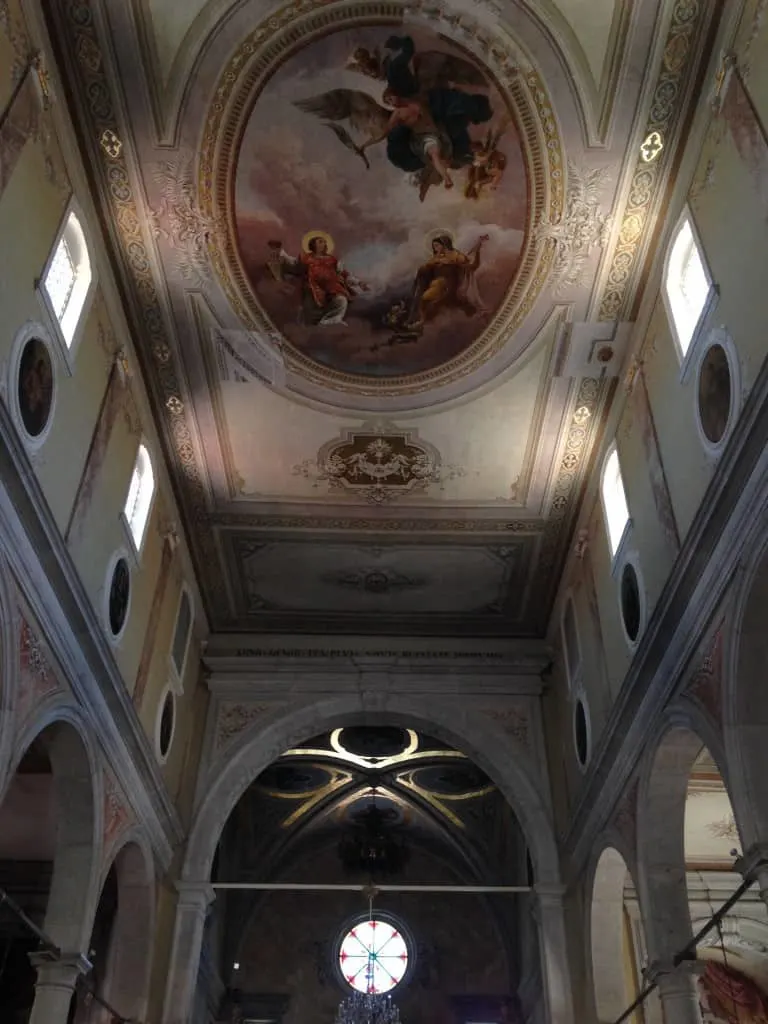
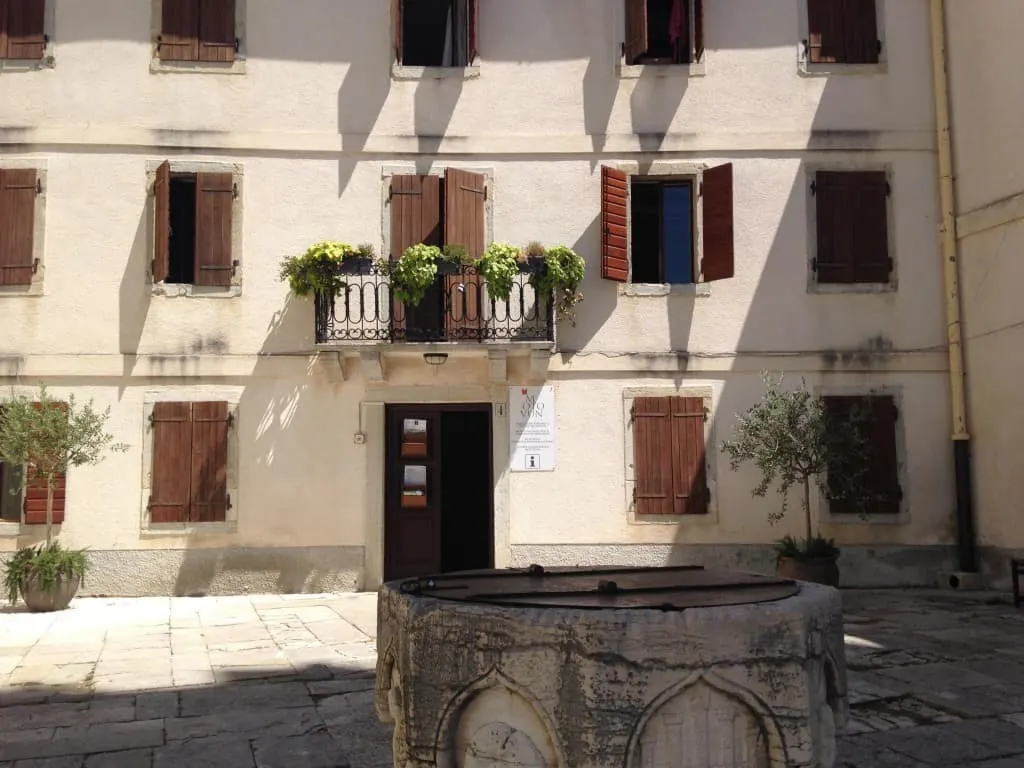
Widely considered, according to Wikipedia, to be the “single most influential individual in architecture throughout history,” Palladio’s designs incorporate classical symmetry, perspective and values harkening back to Roman temples. In his churches, two interlocking architectural orders can be seen, representing the hierarchy Catholicism assigns to divine and earthly worlds.
Surrounded by all this symbolic richness, Natalia and I strain for some sort of grounding, to feel a pulse, or perhaps a low-pitched hum signifying we share a universal connection with these elements. But there is nothing. Sheepishly, we lower our arms and laugh.
“The old woman smiled. ‘Past tears are present strength,’ said she.” – George MacDonald, Phantastes
Walk the Wall and Learn About Veli Joze, the Giant of Motovun
In Motovun, the medieval wall is now a pathway upon which you can walk the ancient city’s circumference. In the heat of the day, we amble slowly, taking in the views.
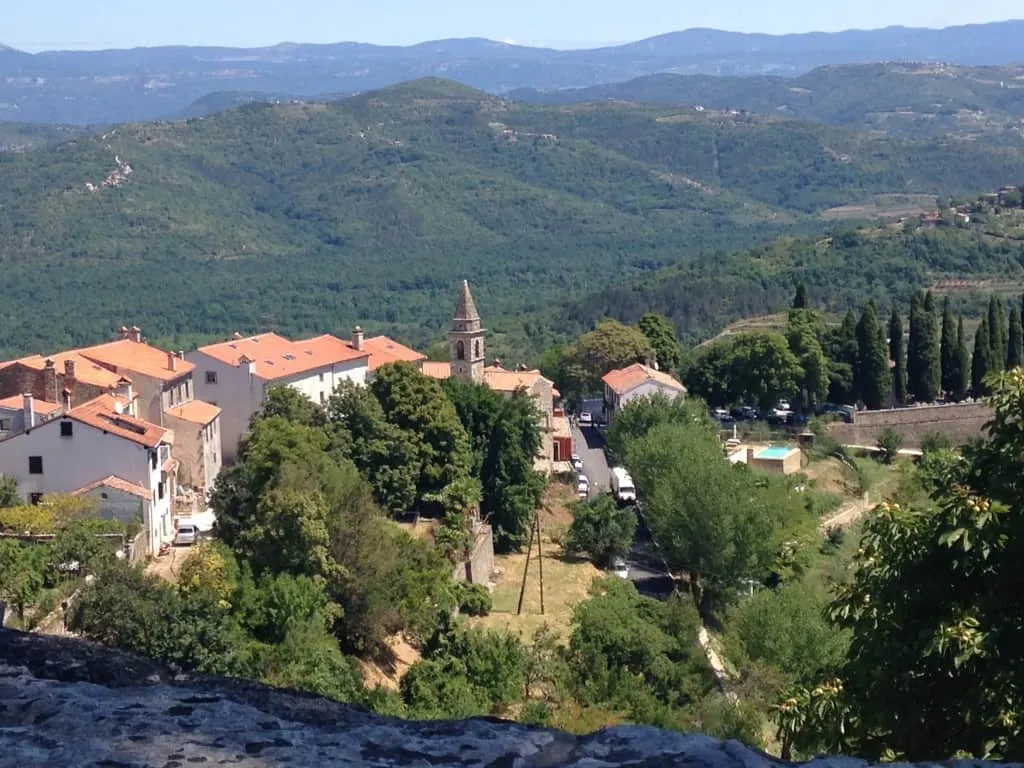
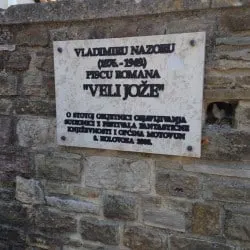
Our pace is perfect for storytelling and the most famous story Motovun can boast is one revered in all of Croatia: the legend of Veli Joze. The story begins with traditional Croatian lore that many giants once lived among the little people, but eventually every locality poisoned theirs save for one. The town giant they kept would do heavy lifting, protect against bears and wolves, and farm their cropland.
Motovun didn’t treat its giant, Veli Joze (“Big Joe”) very nicely. When he felt particularly disrespected, he would furiously shake the St. Stephen’s bell tower in an ear-splitting, retaliatory racket.
The story of Veli Joze was put in written form in 1908 by Croatian poet, Vladimir Nazor. Nazor, who fought as a partisan with Tito during WWII, is revered as a national hero: Croatia’s first post-war Parliamentary speaker and head of state.
Veli Joze was seen as a symbol of the Croatian struggle against German and Italian nationalistic influences at the time it was written. Today, the tale of a gentle giant who railed against humiliation resonates as an allegory against oppression and enslavement.
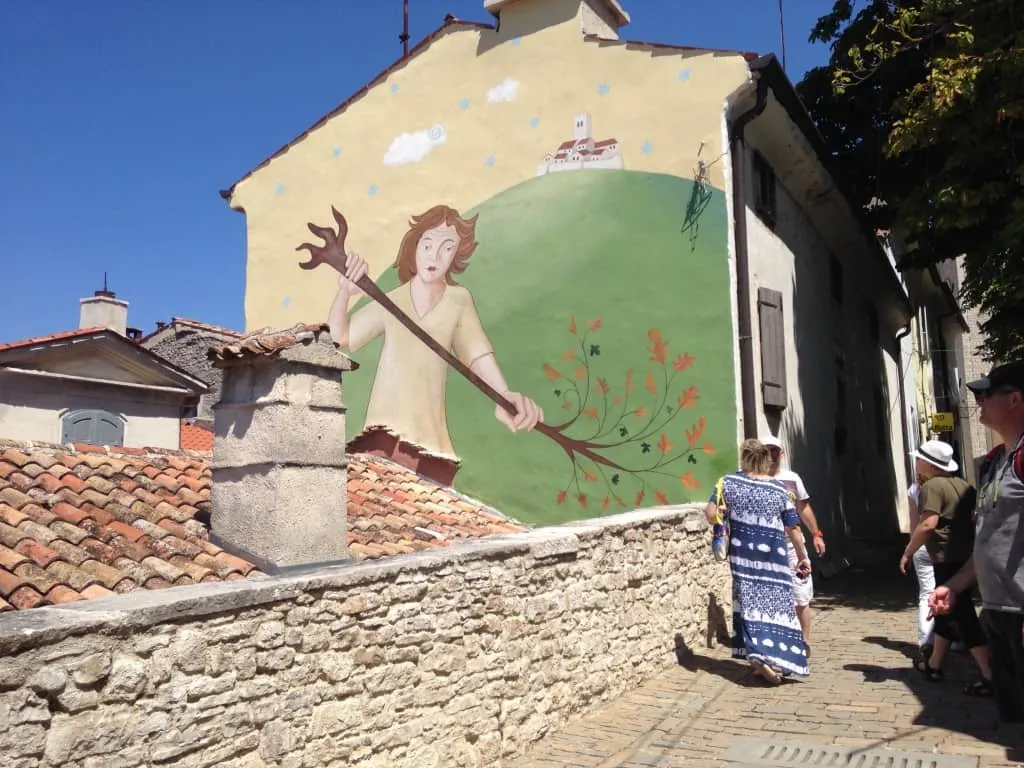
We turn on the top of the wall to look back on the tower, imagining Veli Joze silhouetted against the sky, ringing its bells in anger and anguish. Natalia points to an oversized effigy leaning rather casually on a whitewashed wall. “You know they’ve dug here and uncovered giants’ bones,” she tells me.
It’s unclear in translation whether “here” means Istria or Motovun itself. We are looking at an open plot, marked by boundaries of stone. It’s easy to imagine this as Veli Joze’s resting place in the shadow of the bell tower.

“It’s sad,” I say, thinking of other tales and allegories of the mistreated and misunderstood: Hugo’s Hunchback of Notre Dame, Beaumont’s Beauty and the Beast, Grimms’ Frog Prince. “Yes, but Veli Joze lives in our hearts,” says Anastasia. “So sad, yes, but maybe he’s happy we love him now.”
“The most learned men have been questioned as to the nature of this tuber, and after two thousand years of argument and discussion their answer is the same as it was on the first day: we do not know. The truffles themselves have been interrogated and have answered simply: eat us and praise the Lord.” – Alexandre Dumas (1802-1870)
Truffles: Treasure in the Forest Below Motovun
Below the wall of Motovun are hillsides planted with vines. These give way to the banks of the River Mirna and the 4-mile square Motovun forest, which has just under 700 acres protected.
While most of Istria is karst with little topsoil, the loam in this forest contains treasure. The black tartufe (truffle) and its rare white cousin thrive hidden deep in this ground, and the locals use specially-trained dogs to hunt them.
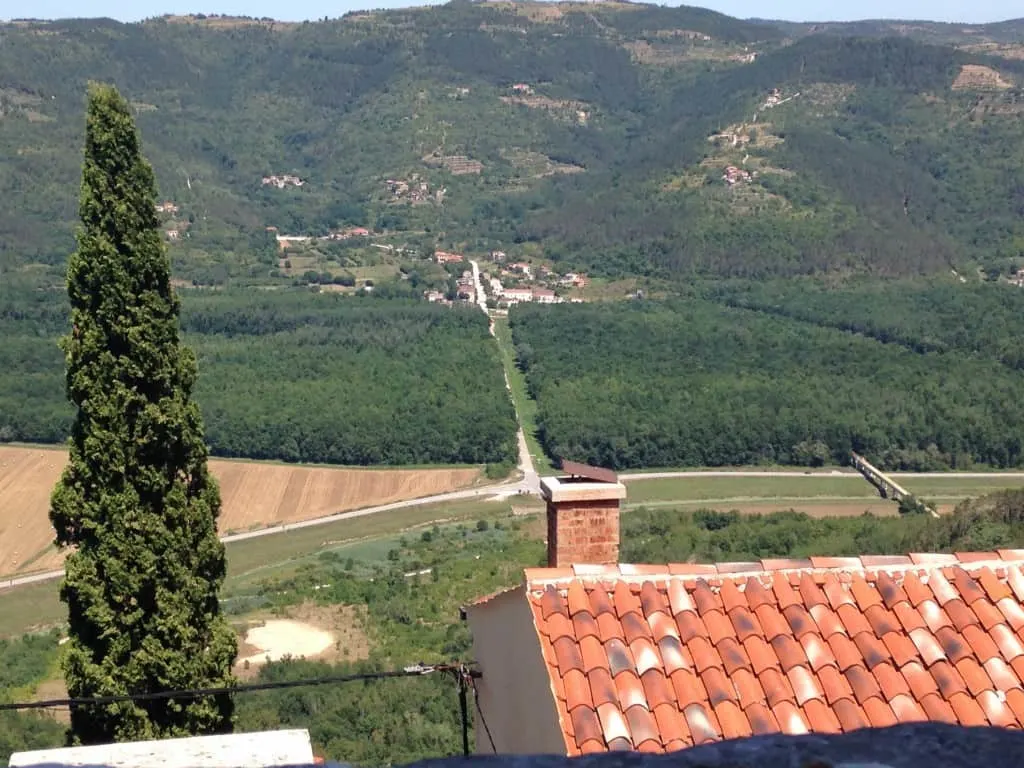

It is said in the myth of Medea that Jason and the Argonauts traversed Istria on the Mirna via a subterranean passageway. Later, Venetian vessels sailed it from the sea past Motovun to Buzet. Thus, empires from Rome to Austria-Hungary, ancient to modern day, feasted on Istrian truffles.
But in today’s truffle realm, a restauranteur claims the crown. It was here in the Motovun forest in 1999 that Giancarlo Zigante found the biggest truffle in the world, ever. All 1.3 kilograms of it.
Rightfully, a bronzed replica of this monster truffle is enshrined at Restaurant Zigante, in the crossroads of Livade below Motovun.
Zigante’s menu, entirely based on truffles, is served with old-school, white-gloved, understated flourish to gourmands from around the globe, pilgrims who have reached the Holy Grail of truffle-dom. The big truffle? Served to 100 guests in a promotional dinner.
Just because you go tromping through muddy woods in your Wellies with your favorite truffle-hunting dog doesn’t mean you can’t be a good marketer. Some might say this is what makes you one.
Tasting Truffles at Restaurant Zigante
Danijela Hodzic, the sales and marketing manager for Restaurant Zigante and its ancillary businesses, is waiting to oversee our tasting. Her operations include truffle hunting demos with the famous truffle dogs, tastings in two locations, factory tours, four-star rooms in a refurbished stone house adjacent to the restaurant, seasonal menus designed by award-winning chef Damir Modrusan, and a Truffles Days Fair and Exhibition event in the autumn of each year.

Eagerly, we learn how truffles are transformed into traditional Istrian products. And we taste them: truffles in oils, truffles mixed with sheep’s milk cheese, truffle honey, truffle butter, minced black and white truffles. Each is more intoxicating than the last.
The taste is unmistakeable, earthy and rich, alternating in intensity, rolling on our tastebuds in the sweet suspensions and textural blends for which Zigante is famous. Danijela and her assistant stand bemused as we argue good-naturedly which is best. It doesn’t matter, because I want every kind of truffle product there is in this room.
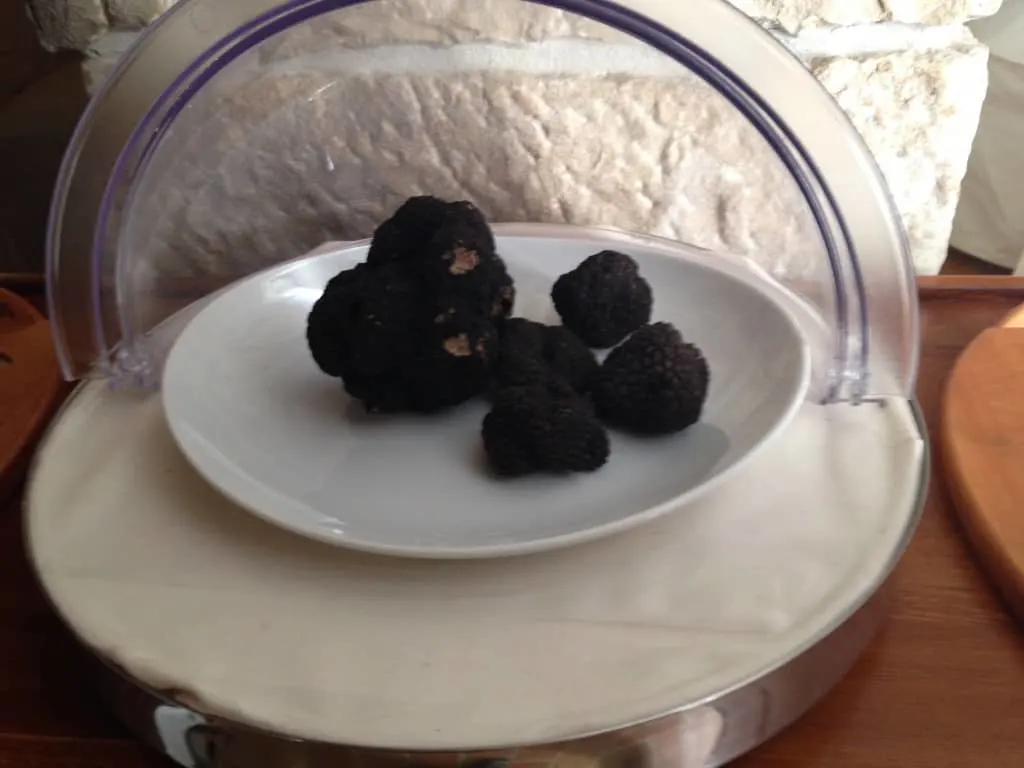
I load up without considering logistics. These truffles are so superb, I throw baggage overage potential to the wind, and select from glass jars filled with Zigante’s various truffle elixirs.
I get the pot of truffle cheese, and the jar of truffle honey. I choose a large container of minced black truffles, and a tiny one of white (whose flavor is twice as strong). I grab a booklet of recipes, knowing full well it’s more likely all this magic will just be eaten straight out of the jar.
I want to taste this day again and again in these incomparable flavors.
Want to hunt for truffles yourself with an expert and trained dog? Click here to book a marvelous experience with famous guide Nikola Tarandek, who was featured in the New York Times, and then enjoy a two course lunch featuring truffles and other local flavors.
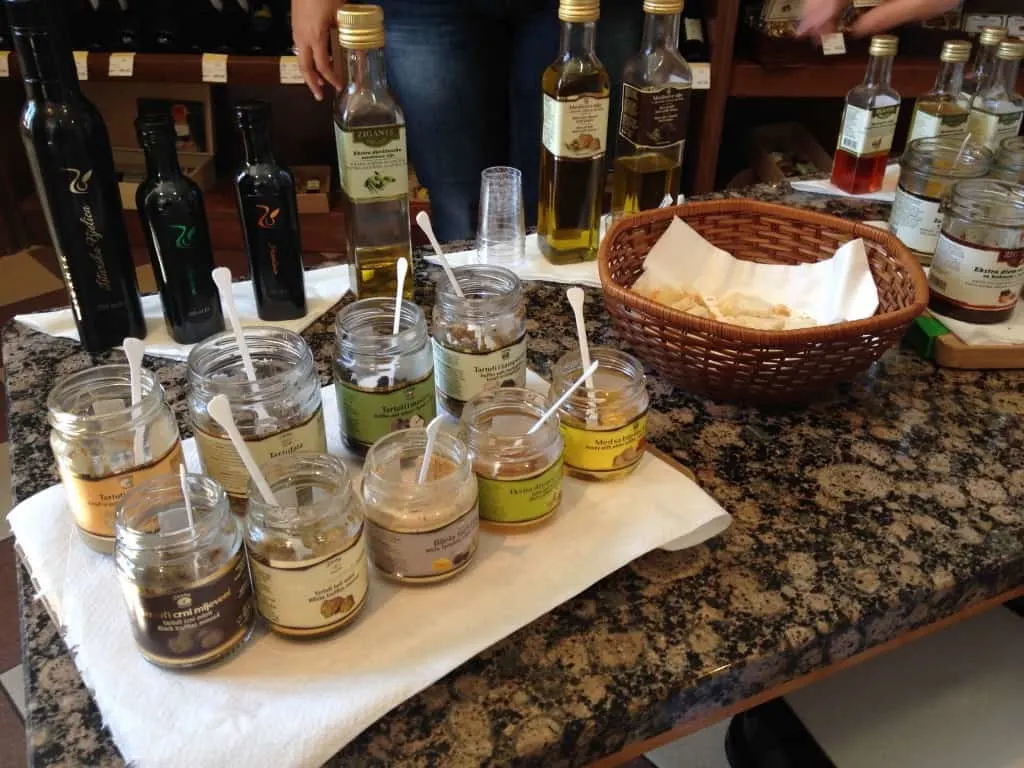
Motovun Casts a Spell That Lingers
At certain times of the year, as I am shown in photographs, Motovun becomes a city in the clouds, rising from a ring of fog like an apparition.
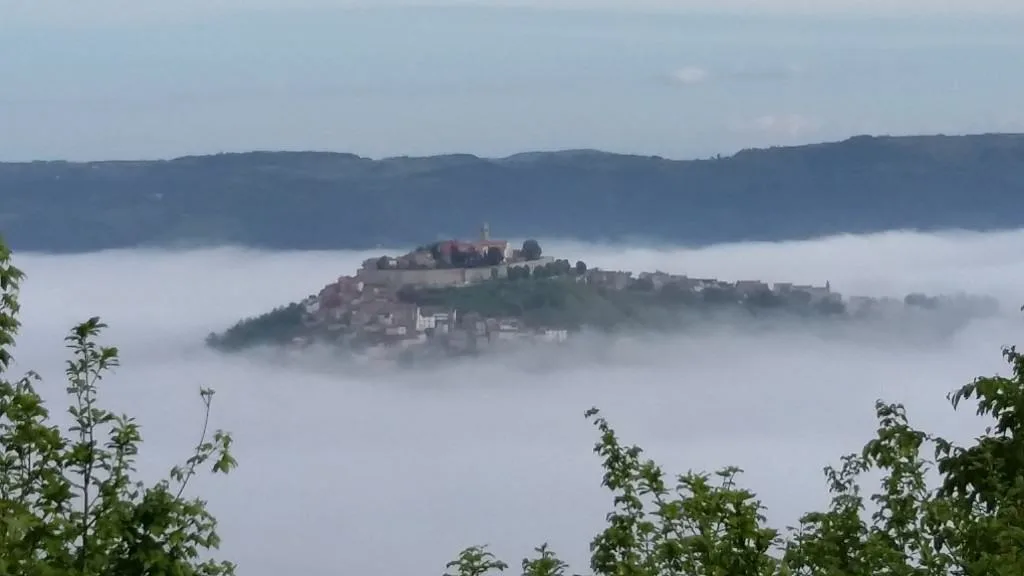
Bell tower pointing toward the heavens, anchored in the mist, ancient legends of giants and dragons set within its walls, the citadel has a compelling magnetism even without the New Age vibration we listened and felt for in vain.
Maybe, I think now with the clarity of distance, I didn’t have to actively seek the magic of Motovun at all. Instead, like Anastasia said of Veli Joze, it settles in the heart on its own. The mystique of Motovun still lingers these months later.
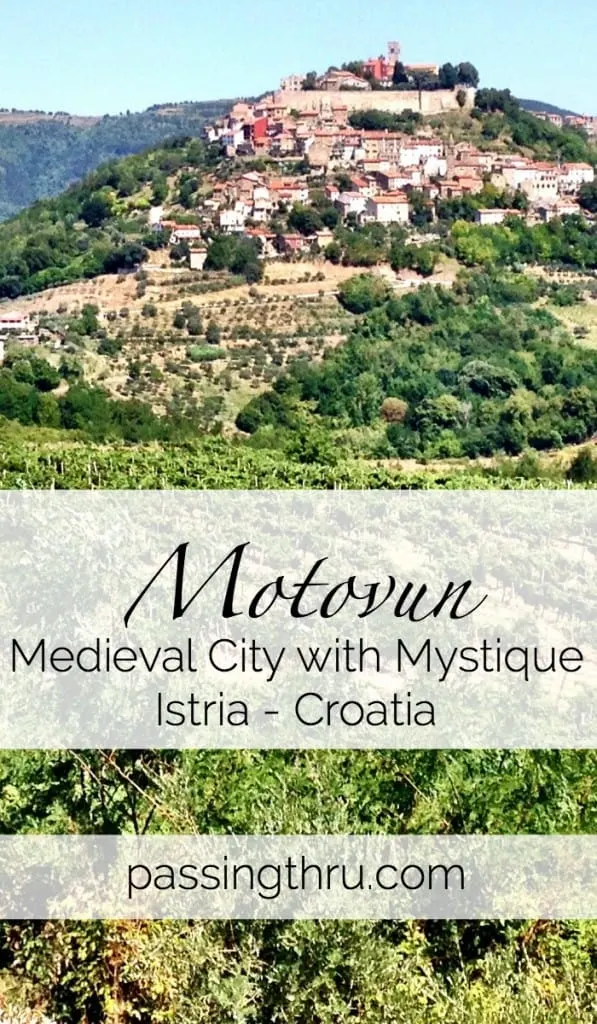
Know Before You Go
Your personal visit to Motovun and other Istria experiences can be arranged by Natalia Marcelja or one of her colleagues at Solen Travel Agency, Strossmayerova ul. 2, 51000 Rijeka Croatia. Tel. +385 51 371 587. Email [email protected].
If you’d rather, choose from one of the following tours from our trusted partner:
Restaurant Zigante, Livade 7, 52427 Livade, Croatia. Tel. +386 52 664 302. Danijela Hodzic, Marketing Manager, email: [email protected]. More from Zigante on truffle hunting, production, gastronomy and culture in this video:
Where to Stay In or Near Motovun
Tips for Trip Success
Book Your Flight
Find an inexpensive flight by using Kayak, a favorite of ours because it regularly returns less expensive flight options from a variety of airlines.
Book Your Hotel or Special Accommodation
We are big fans of Booking.com. We like their review system and photos. If we want to see more reviews and additional booking options, we go to Expedia.
You Need Travel Insurance!
Good travel insurance means having total peace of mind. Travel insurance protects you when your medical insurance often will not and better than what you get from your credit card. It will provide comprehensive coverage should you need medical treatment or return to the United States, compensation for trip interruption, baggage loss, and other situations.Find the Perfect Insurance Plan for Your Trip
PassingThru is a participant in the Amazon Services LLC Associates Program. As an Amazon Associate I earn from qualifying purchases.
To view PassingThru’s privacy policy, click here.

Romantic Rovinj | Passing Thru
Sunday 3rd of April 2016
[…] ul. 2, 51000 Rijeka Croatia. Tel. +385 51 371 587. Email [email protected]. Read more from us about Motovun and tasting […]
Amanda Williams
Monday 21st of December 2015
Brilliant post! Really enjoyed reading this
Betsy Wuebker
Tuesday 22nd of December 2015
Hi Amanda - Thank you!
Sue Reddel
Monday 9th of November 2015
Another terrific story Betsy! I'm fascinated with the ley lines in your tale. I've visited several places that have these types of feelings of spirituality. Cappadocia and Sedona come to mind. I've always described them as special places on earth. I'll have to learn more about ley lines thanks for putting that together for me.
Betsy Wuebker
Monday 9th of November 2015
Hi Sue - It's one of those concepts that, once you've learned about it, keep popping up unexpectedly but too frequently and specifically to be random. You're right about Cappadocia and Sedona.
Andrea Leblang
Sunday 8th of November 2015
Fabulous post! We just left Istria after living there for two months. We stayed in Rovinj, but I loved driving to the hilltop towns and Motovun was one of my favorites!
Betsy Wuebker
Monday 9th of November 2015
Hi Andrea - We stayed in Rovinj as well, in an apartment in Natalia's home, and loved it. I can't imagine anyone not loving Motovun.
Kathrin
Sunday 8th of November 2015
This article was immensely well written! I loved to read it, very good storytelling. Keep up the great work :)
Betsy Wuebker
Monday 9th of November 2015
Hi Kathrin - Thank you so much.